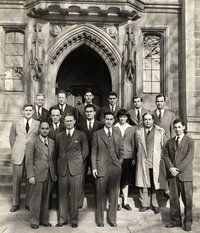
The University of Chicago is not only the site of the world's first self-sustaining nuclear reaction, but also one of the earliest and most influential centers of the atomic scientists' movement. The movement began early at Chicago, and predates one of its best known fora, The Bulletin of the Atomic Scientists, a journal for atomic scientists and lay people alike to discuss the social and political consequences of atomic science and to argue against global proliferation which has been published in Hyde Park since 1946. Before the first atomic bomb fell on Hiroshima in August of 1945, Chicago's Manhattan Project staff members had already begun to voice concern about the dangers of atomic research. By the summer of 1943 the problem was the subject of concerned conversation amongst staff members in private, and in meetings held under military guard. The earliest concerns focused on the dangers of governmental and especially military control over science. The conversation continued throughout 1944, with increasing frequency and clarity, resulting in the submission of the Jefferies Report, from the committee headed by Zay Jefferies and submitted in late 1944, which stressed the grave dangers posed by nuclear weapons and the need for education of the general public and international controls. This exhibit draws on the University of Chicago Archives to present the pivotal role Chicago has played institutionally in the development of the international atomic scientists' movement that took root in America as crucial consequence of the events of December 2, 1942.